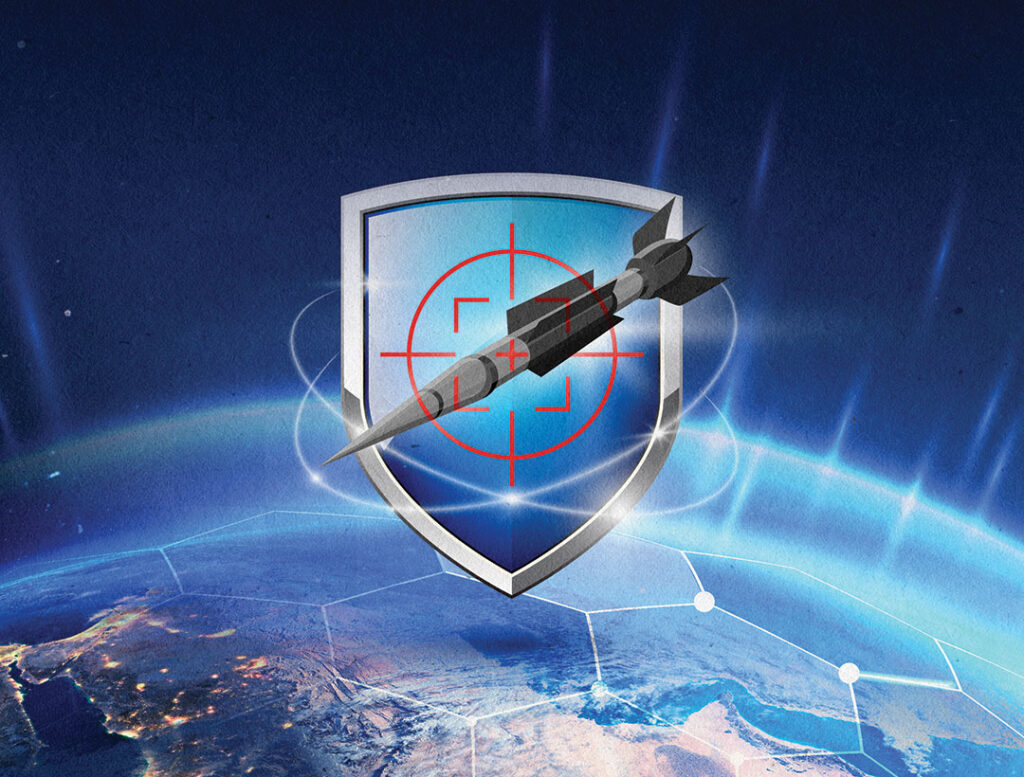MAJ. GEN. KHALED ALSHRIAAN, COMMANDER, KUWAIT AIR DEFENSE FORCE

Integrated air and missile defense (IAMD) is essential in peacetime and conflict and is the ideal solution to counter emerging and future aerial threats. It achieves integration and interoperability among all defensive systems to protect vital and strategic areas from aerial threats.
The development of air threats using unmanned aerial systems (UAS), cruise missiles (CM), and tactical ballistic missiles (TBM) is occurring rapidly and is being used widely and effectively by various actors.
UAS improve tactical and technical parameters as well as reduce radar and thermal signatures and may grow in significance as artificial intelligence (AI) plays a greater role.
On the other hand, small commercial drones are also being used extensively on battlefields after their capabilities have been upgraded to carry lethal weapons. This type of drone is low cost and easy to obtain from commercial markets.
In terms of CMs, it is anticipated that future developments will result in increased range and the continuation of their ability to maneuver at low altitudes and high speeds. Cruise missiles are capable of operating at subsonic, supersonic and hypersonic speeds.
Hypersonic cruise missiles are considered highly advanced weaponry. This is due to their ability to change trajectory throughout the flight at speeds of Mach 7 or more. Their low radar cross section makes them practically undetectable and their maneuverability during the entire flight path reduces the possibility of radar detection.
Also, the dispersal of TBMs in large numbers and their possession by various threat sources constitute a dangerous development at all times and everywhere because these missiles benefit from speed and reach. Therefore, early warning systems and high combat readiness should be maintained 24/7 for quick response.
To counter the aerial threats effectively, the early warning system should provide sufficient time to the command and control system to make the correct decisions at the appropriate moment, because in recent times, air threats depend on exploiting certain advantages, the most important of which is the stealth factor using low-flying UAS or cruise missiles with very small radar cross sections and maneuverability to reduce detection and achieve surprise.

The concept of IAMD is considered extremely important to achieve effective regional air defense, integrating and harmonizing early warning, command and control, and air defense systems. Therefore, for any air defense to be effective, the following should be achieved:
First, develop robust early warning systems that can detect all types of air threats, especially targets with very small radar cross sections (slow, low and small) and detect them at the appropriate times so that air defense systems can repel and destroy the threats before they achieve their goals.
Second, an effective, advanced command and control center should be compatible and integrated with early warning sensors and air defense weapons systems with secure communications that meet all cybersecurity requirements. The command and control center must be able to work as part of national and regional networks. It must integrate with a Gulf Cooperation Council early warning system as well as those of allied forces. Continuous training involving realistic simulations should hone the skills of the staff at these command and control centers to ensure rapid decision making.
Third, we must develop an integrated air defense umbrella capable of destroying all types and sources of threats no matter their altitude, speed or course. Planning must focus on 360-degree air defenses capable of repelling swarm attacks and maintaining combat readiness of personnel and equipment by raising the level of performance through the use of artificial intelligence. To ensure the security of computer systems, we need a cybersecurity policy that evolves as threats develop and is compatible at the national and regional levels.

IAMD still faces challenges on both policy and technical issues. These must be overcome. First, clear national policies must be established with a long-term plan that specifies how, who, where and when. National policies must be harmonized at the regional level to create a joint policy.
On the other hand, technical challenges must be resolved as soon as possible because aerial threats are developing rapidly. IAMD must be updated to match those threats as quickly as possible.
Col. John Boyd of the United States Air Force developed a decision-making model called the OODA loop that contains four steps (observe, orient, decide, act).
If we apply the OODA loop to IAMD decision–making and we can act to confront the air threat at the right time and place, we can defeat the air threat. But if we react once the aerial threat is well advanced, we will suffer setbacks.
That’s why IAMD provides observation by the early warning systems, orientation and decision making at the command and control center, and action by air defense weapons systems. Integration and interoperability at all these levels will help us defeat threats from the air.

